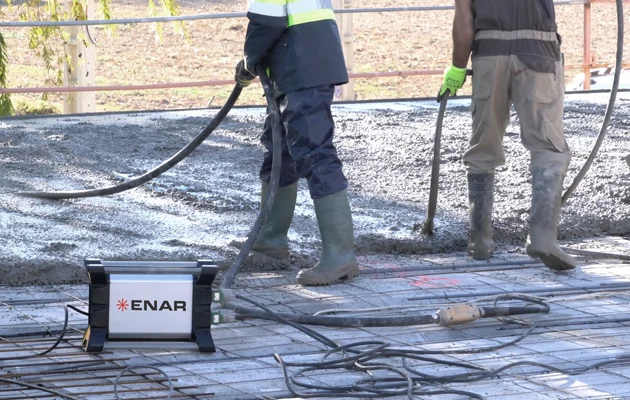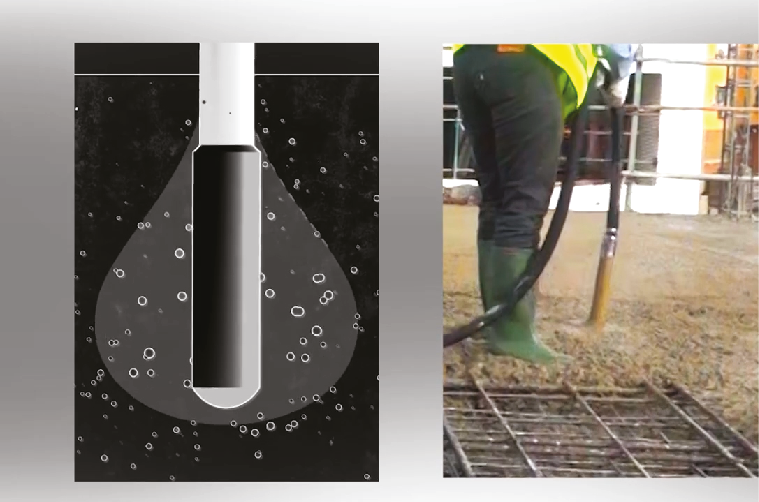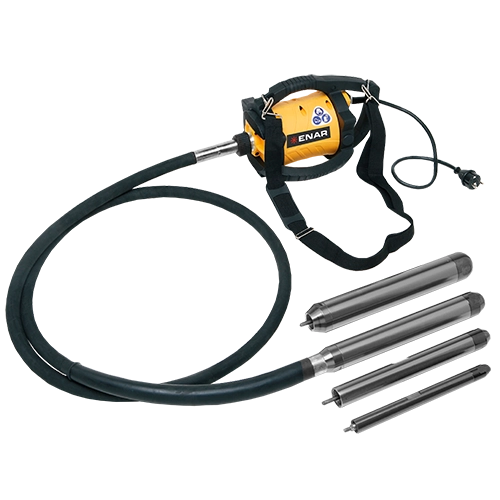
How do vibrators work to achieve a correct concrete compaction?
Concrete is a mixture composed of water, sand, gravel and cement. The vibrator transmits high-frequency oscillations to the mixture, so the internal friction between the different particles decreases, and against the gravity forces. Therefore, concrete adopts a form similar to being a fluid, so it fills and penetrates cavities that contained air holes. Air exists on concrete due to the pouring process and different chemical reactions between its components.
Thanks to vibration, these holes go up to the surface in the form of bubbles and so the volume of the mass of concrete decreases around 1%.

On the image above we can observe the functioning process of the vibrator when introducing its head on the concrete mass. The result obtained is clearly visible, with high-quality surfaces and a far better appearance and aesthetic appeal. When the vibratory head is dived into the concrete, the trapped air and excess water go up the surface, leading into a more homogeneous texture and an adequate concrete compaction. Concrete construction works often present critic working conditions with different risk factors. In ENAR, the security of the equipment users comes first, so we make a great effort on complying the needed certificates and requirements.
As we mentioned above, the concrete vibration process pursues the rearrangement of the different particles and components that conform the concrete mass. Therefore, the head of the vibrator must not be used to dig or mix the concrete, but to apply the vibratory oscillations required for the optimum mixing process.


.webp)
.png)
.jpg)
 DINGO
Eccentric Electric Vibrator
DINGO
Eccentric Electric Vibrator